Site menu:
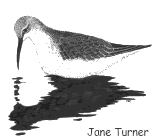
November 2016 Newsletter
Curlew Sandpiper Influx 2016.
Gilroy - Before and After.
Colour Ring Report.
October Bird News.
Forthcoming Events.
Latest Newsletter.
Curlew Sandpiper Influx 2016
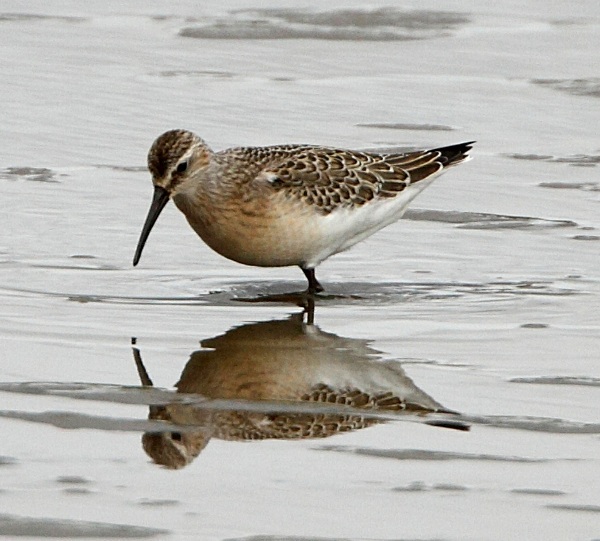
It has been a good year for Curlew Sandpipers. The first juvenile
arrived on August 16th and over the next two days singles were
at
Hilbre and Burton Mere Wetlands. But it was at Hoylake where there was
a big influx with nine on the 20th. These are all very early dates and
this was reflected nationally with a large number of birds arriving in
the third week in August. By September more were at Burton Mere
Wetlands and it was probably the same birds there for several days
which gave a late peak in the second week of September. A double peak,
which is shown locally for all three years (2011, 2013 and 2016), seems
to be due to birds first concentrating on Hoylake shore (and nearby
sites) then moving to Burton Mere Wetlands, there is little indication
of a double peak nationally.

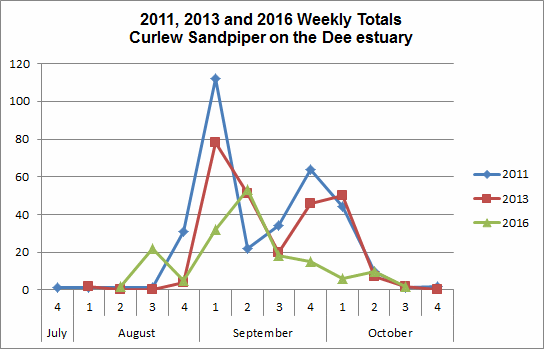
The bar chart below shows we had 10 poor years up to the big influx in 2011, followed by good years in 2013 and 2016. The numbers are the total of all daily records, so those birds which stayed for several days will have been counted more than once.
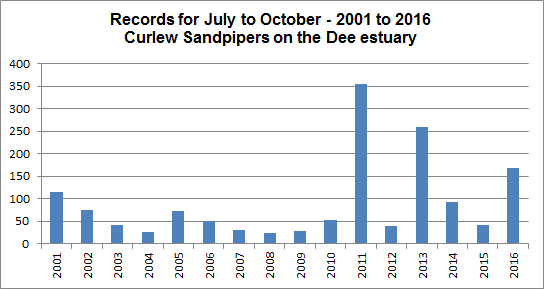
The
breeding success of Curlew Sandpipers is very much governed by the
Lemming cycle with good Lemming years, when predators can more easily
catch rodents rather than chicks, coinciding with good breeding years.
Many years of monitoring this species in Poland, where they have far
more birds than we get, including adults, has shown that after
a
good breeding season the juveniles arrive a week earlier than for a bad
season. As the graphs show the juveniles arrived exceptionally early
this year both locally and nationally, so this may well indicate an
exceptionally good breeding season. Trawling through British Birds, in
particularly the well documented influxes of 1969 and 1988, such an
early large arrival of juvenile Curlew Sandpipers into the country
appears to be unprecedented. There were some large numbers involved
including 258 at RSPB Frampton Marsh close to the Wash and 70 across
the Irish Sea in Wexford. The highest count on the Dee
estuary
was just 13 at Burton Mere Wetlands, but previous influxes have
resulted in much higher max counts with 32 in 2011 and a massive 108 at
Heswall in 1996 when at least 40 were present for four weeks. I think
we are overdue for another major passage of this lovely small wader.

References and Further Reading:
1. Yahkat Barshep, Wlodzimierz Meissner & Les G. Underhill, Timing of migration of the Curlew Sandpiper (Calidris ferruginea) through Poland in relation to Arctic breeding conditions, Ornis Fennica 89:120-–129. 2012.
2. P.I. Stanley and C.D.T. Minton, The unprecedented westward migration of Curlew Sandpipers in autumn 1969, British Birds 65: Sept 1972.
3. J.S. Kirby, K.K. Kirby and S.J. Woolfall, Curlew Sandpipers in Britain and Ireland in autumn 1988, British Birds 82:9, 399-409.
4. BirdTrack (BTO) - www.birdtrack.net.
5. Cheshire Bird Reports 2001 to 2014.
6. Clwyd Bird Reports and North-east
Wales Bird Reports - various.
7. Latest Sightings archive - www.deeestuary.co.uk (many thanks to everyone who sent their sightings to me).
Richard Smith.
Gilroy
Before..............

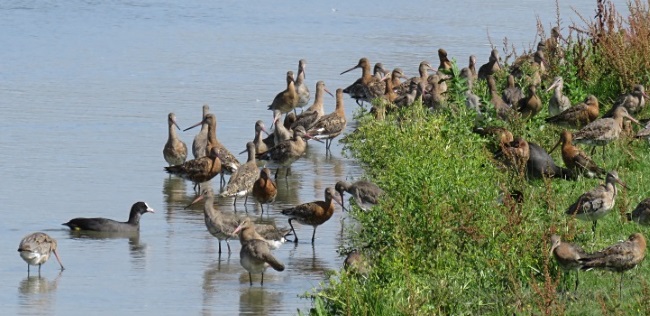
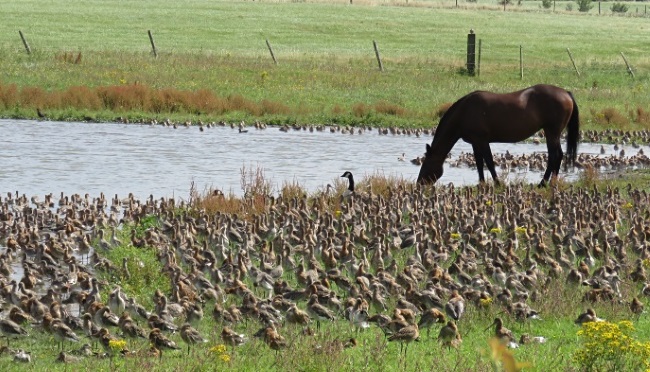
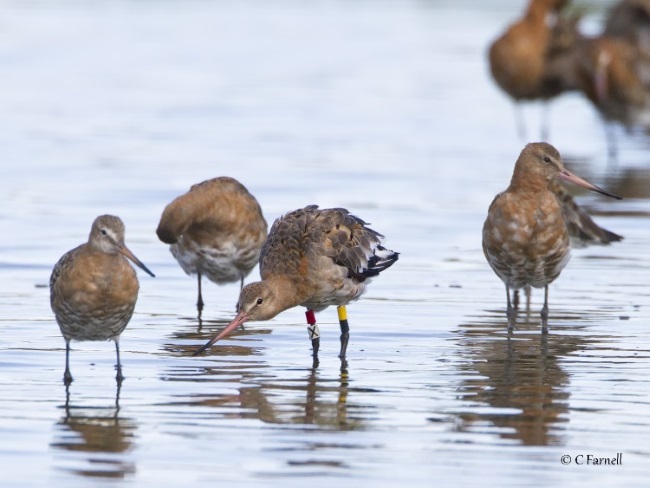
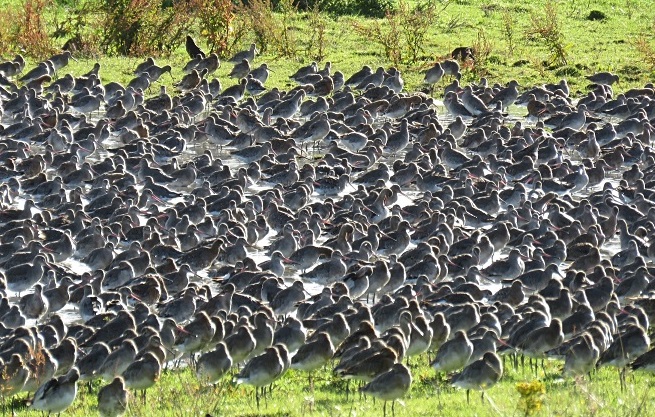
And After......
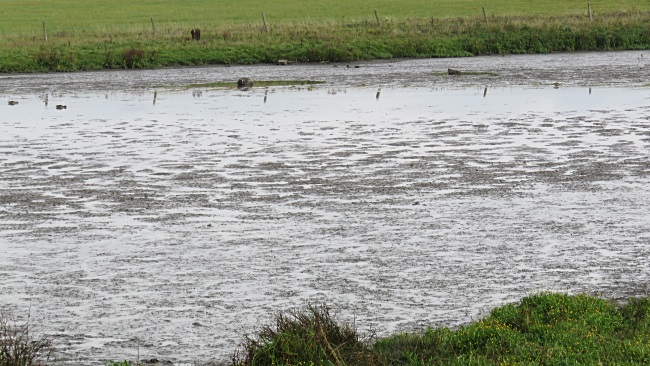
Many thanks for your overwhelming support. At the tme of writing this (Oct 31st 2016) nothing is yet resolved but we are very hopeful that the Gilroy Scrape will be restored. As soon as I know something definite I'll put it on my home page.
There is a very interesting article written by Graham Appleton about the importance of safe roost sites for Black-tailed Godwits, it mentions Gilroy and he has kindly used some of my photos:
https://wadertales.wordpress.com/2016/10/30/a-place-to-roost/
Richard Smith
Colour Ring Report
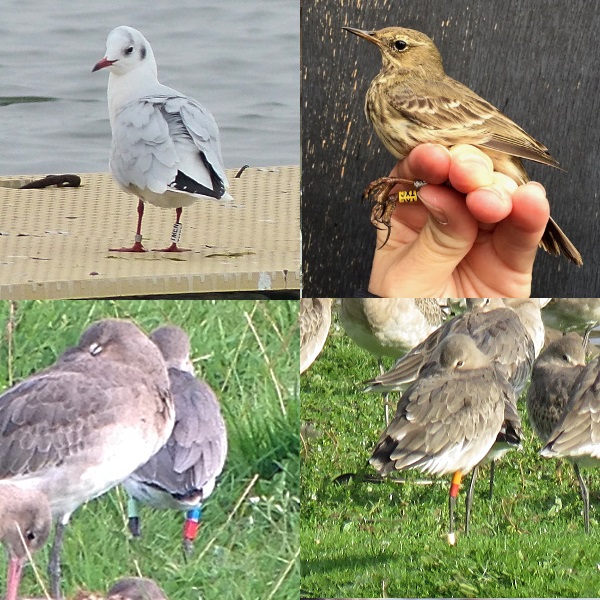
Apart from Twite (featured in the
December 2015 Newsletter)
colour-ringed passerines are very rarely recorded around the Dee
estuary and, being so small, even more rarely successfully read.
Luckily the Rock Pipit seen on Hilbre was caught as you can see in the
above photo. Black-tailed Godwits were recorded in good numbers through
September and October, I report three colour-ringed birds
here.
Colour-ringed Gulls have been in short supply with just one seen, and
we have another Canada Goose from Lake Windermere.
Black Headed Gull
TMEN, Black letters on a white ring.Ringed near Lodz in Poland on April 12th 2013.
Recorded on the shore between the Marine Lake and Little Eye, West Kirby, on October 2nd 2016, also seen later in the month on the pontoon on West Kirby Marine Lake.
Apart from when it was ringed this bird has never been recorded away from West Kirby and Hoylake.
It was present from September to January 2013/14.
From July to February 2014/15.
From October to February 2015/16.
Rock Pipit
TXC, white on yellow ring.Ringed at Giske Ornithological Station, Giske Island, Norway, on August 14th 2016.
Recorded at Hilbre on October 10th 2016 and on several dates through the month, also at Red Rocks on October 19th.
From the Hilbre Bird Obs Blog: "Two of the Rock Pipits that bred on the island this year were recaptured this morning, so when another Rock Pipit was seen to be in the potter trap, nothing special was thought of it, until that is a bird bearing a Norwegian metal and colour ring was extracted. Rock Pipits were known to pass through the islands in small numbers in late autumn and we could only speculate as to their origin, now we have concrete evidence that at least some are from Scandinavia. Members were naturally very excited by this occurrence, one of the best ringing controls ever at Hilbre."
Black-tailed Godwits
WO-BR, ringed in northern Iceland as a chick on July 19th 2013.Recorded at Gilroy, West Kirby, on September 17th, 20th and 23rd September 2016.
This bird spends every February in the rice fields near Lisbon although it hasn't been sighted anywhere in any other winter month. It was spotted back in Iceland in May 2015 and it spent July 2015 on the east coast of England being seen near Doncaster and on the Humber Estuary. August 2016 saw it on the Alt Estuary across the River Mersey before it moved to Gilroy in September.
R-OR//W, ringed at Holbeach on the Wash on August 12th 2006.
Recorded at Caldy Wildfowl collection, West Kirby, on October 22nd 2016 and on three dates later that month on Thurstaston shore.
This bird seem to disappear for months and even years at a time. Perhaps it hides in some obscure creek in southern Ireland and it was here, at Clonakilty near Cork, in October 2008, March 2009 and September 2009. It was not seen again until the cold spring of 2013 when it spent the second half of April at the Caldy Wildfowl collection close to the Dee estuary. August 2013 saw it back on the Wash and the following winter back in southern Ireland, where it was also in December 2015. The only other site it has been recorded is the Ouse Washes where it was in February 2015.
LN-BR, ringed in Iceland on July 15th 2013 as a chick.
Recorded on six dates in September and October 2016 at Gilroy, West Kirby.
It was at Marshside near Southport during October 2013 before turning up at Burton Mere Wetlands in March 2014. Apart from a visit to Port Sunlight River Park in September 2014 it was recorded exclusively at either Gilroy or Thurstaston over the next two years. July and August 2016 saw it at the Slimbridge WWT centre before turning up at Gilroy in September.
Canada Goose
CACJ, white letters on red ring.Ringed at Bowness-on- Windermere on June 28th 20146.
Recorded at Burton Mere Wetlands on September 17th 2016.
Also seen at Talacre (Point of Ayr) on September 24th 2014. It was back at Bowness-on-Windermere in June 2015.
This bird was ringed by the RSPCA Ringing Group as part of a project looking at movements to and from Lake Windermere, Cumbria, where the majority are ringed during the annual moult period.
Richard
Smith and Matt Thomas.
Colour-rings were also reported by Steve Hinde, Derek Bates, Steve
Williams and the Hilbre Bird Observatory.
October Bird News
Suddenly we seemed to have been
inundated with species of white herons with record numbers of
Spoonbills (12), Cattle Egrets (5) and Great White Egrets (12), that's
apart from Little Egrets whose numbers have increased from single
figures to several hundred in 15 years or so. Sometime over
the winter I'll write an article putting these numbers into a local and
national perspective.

We were also inundated with Yellow-browed Warblers. We have now got used to relatively large numbers on the east and south coast of the UK in recent years but we get very few here. But from the end of September though to late October we had an unprecedented 35 records - compare that with six in 2015 and just one in 2014!! Again, my plan is to write an article about these fascinating if difficult to see birds.
Two female Marsh Harriers were recorded through the month with a male also seen. It was good to see a grey male Hen Harrier flying over the marshes and there appears to be at least three ringtails also present. Five Short-eared Owls were off Denhall Quay by the end of the month, hopefully we'll see more during the spring tides due in November. A Bittern was spotted a few times off Parkgate Old Baths.
Large numbers of Common Scoters were seen all month off north Wirral, we estimated at least 10,000 on several dates but it wasn't until we had a mirror like flat calm sea on the 21st did we realise we had in the region of 40,000 out there. The highest ever count for Cheshire and Wirral! A few Velvet Scoters and a Long-tailed Duck were also seen.
Curlew Sandpipers continued to come through in small numbers all month. 750 Sanderlings at Hoylake early in the month was an excellent count although Dunlin and Knot numbers have still to reach their winter levels. Black-tailed Godwit numbers at Gilroy, Caldy and Thurstaston increased through the month to around 4,000 with at least 2,000 on the Welsh side as well.
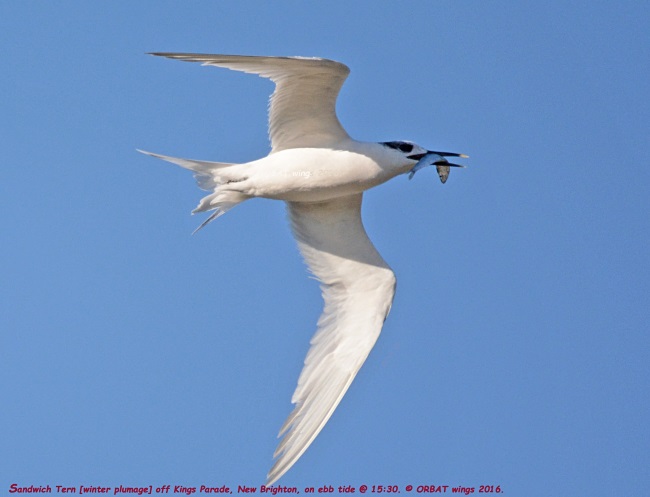
Richard Smith.
What to expect in November
The high tides forecast for mid-month should make for some spectacular views of the birds on the marsh with Hen Harriers, Marsh Harriers, Short-eared Owls, Pink-footed Geese as well as thousands of waders and ducks. If we get a cold spell, especially on the near continent, expect to see many thousands of Knot at Hoylake, Point of Ayr and West Kirby.
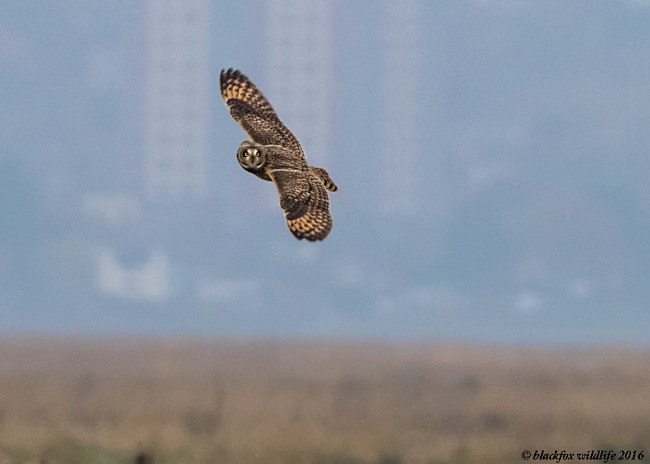
Top of Page
Forthcoming Events
November Highest Spring Tides (Liverpool)
Also
see Tides
page.
14th November, 10.25hrs (GMT), 9.8m.
15th November, 11.11hrs (GMT), 10.0m.
16th November, 11.56hrs (GMT), 10.0m.
17th November, 12.42hrs (GMT), 9.9m.
Forthcoming Events
Organised by the Wirral
Ranger Service , Flintshire
Countryside Service and the
RSPB (Dee Estuary):
All these events and walks have bird interest, even those not
advertised specifically for birdwatching. No need to book for these
events unless specified - please check below.
Start times vary, best to arrive a minimum of one hour before high tide (see below).
Price: Free
Parkgate Marsh is one of the best wetland habitats in North West England, but until you've witnessed the spectacle of a rising Spring tide, it's impossible to appreciate just how much wildlife makes its home here.
Thousands of wildfowl and wading birds that are here for the winter are pushed closer by the rising water and there's a chance of a hunting peregrine trying it's luck. Small mammals usually hidden in the grasses are flushed from cover, offering a feeding frenzy for the kestrels, harriers and short-eared owls.
Join us at Parkgate's Old Baths car park and the Donkey Stand near Nicholl's ice cream shop, where we'll be set up with marquees and telescopes hoping for the right weather conditions to really push the tide in.
Car parking is limited on Parkgate promenade, but there is free public parking at the Old Baths car park (CH64 6RN) at the north end of The Parade, and the Wirral Country Park car park on Station Road (CH64 6QJ). There are public toilets at Mostyn Square in the middle of The Parade, and a number of pubs and cafes for refreshments.
Ring 0151 353 8478 for further details.
High tide times:
Tuesday 15th November: 11.10 am (10.0m)
Wednesday 16th November: 11.56 am (10.0m)
Sunday 27th November, Raptor Watch at Parkgate.
1pm to dusk.
Join us for a chance to see up to seven different birds of prey including peregrine and merlin, plus two types of owl that all make their home on the RSPB Dee Estuary nature reserve. With its panoramic views of the saltmarsh, Parkgate is one of the best places to watch for the birds hunting.
Stick around until dusk for a chance to see the graceful and endangered hen harriers flying into roost for the night on the marsh close to the Old Baths car park, plus a ghostly barn owl emerging to hunt.
No booking required, come along any time between 1 pm and sunset. Dress appropriately for the weather and don't forget your binoculars! Public toilets and various pubs and cafes are situated close by along Parkgate promenade.
Ring 0151 353 8478 for further details.
Directions
The Old Baths car park, Parkgate (just north of The Boathouse pub)
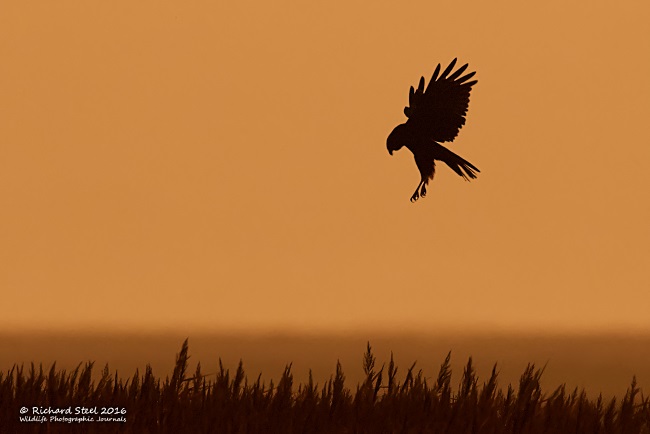 Marsh Harrier off Denhall
Quay, October 31st
© Richard Steel
Marsh Harrier off Denhall
Quay, October 31st
© Richard Steel